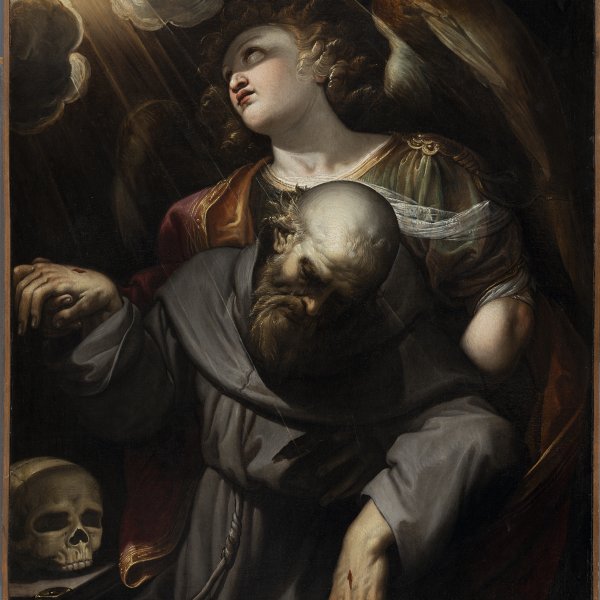Ferraù Fenzoni
Faenza, 1562-1645
Fenzoni was active in Rome under Sixtus V. His style, which is clearly influenced by the artists working for the court of Rudolf II in Prague, can be described as Mannerist, while his chromatic range, use of light, and iridescent tones locate him within the tradition of Federico Barocci. Fenzoni’s painting has affinities with the work of Francesco Vanni and Andrea Lilio (with whom he exchanged drawings). In the last decade of the 16th century he worked with these two artists on the execution of The Pentecost for the Lateran Palace, The Bronze Serpent and The Flagellation of Christ for the Scala Santa, The Library at Athens and The Allegory of the Law for the Vatican Library, and the decoration of the apartments of Pius V. In 1591 Fenzoni painted a fresco for the chapel of Santa Maria in Trastevere and two years later completed the decoration of Santa Maria Maggiore. These two projects are characterized by a sense of realism and a move away from the Mannerism of the previous decade.
At the end of the 1590s Fenzoni was summoned to Urbino by the Bishop of Todi, Angelo Cesi, who had admired his cycle of paintings for the church of Vallicella in Rome (now lost). Fenzoni executed a large number of works in Umbria, notably the fresco of The Last Judgement in 1596 for Todi cathedral, Saint Michael expelling Satan for the Cenni chapel in the cathedral, and The Martyrdom of Saint Lawrence for Perugia cathedral. In 1599 he painted a series of six scenes for an altarpiece in the right aisle of Todi cathedral, which is notable for its proto-Baroque style. This work also reflects Fenzoni’s familiarity with classical art, which he probably knew through the Cenni collection. The artist returned to his native city of Faenza the following year, where he established himself and worked in a style that remained largely unchanged for the remainder of his career.
At the end of the 1590s Fenzoni was summoned to Urbino by the Bishop of Todi, Angelo Cesi, who had admired his cycle of paintings for the church of Vallicella in Rome (now lost). Fenzoni executed a large number of works in Umbria, notably the fresco of The Last Judgement in 1596 for Todi cathedral, Saint Michael expelling Satan for the Cenni chapel in the cathedral, and The Martyrdom of Saint Lawrence for Perugia cathedral. In 1599 he painted a series of six scenes for an altarpiece in the right aisle of Todi cathedral, which is notable for its proto-Baroque style. This work also reflects Fenzoni’s familiarity with classical art, which he probably knew through the Cenni collection. The artist returned to his native city of Faenza the following year, where he established himself and worked in a style that remained largely unchanged for the remainder of his career.





